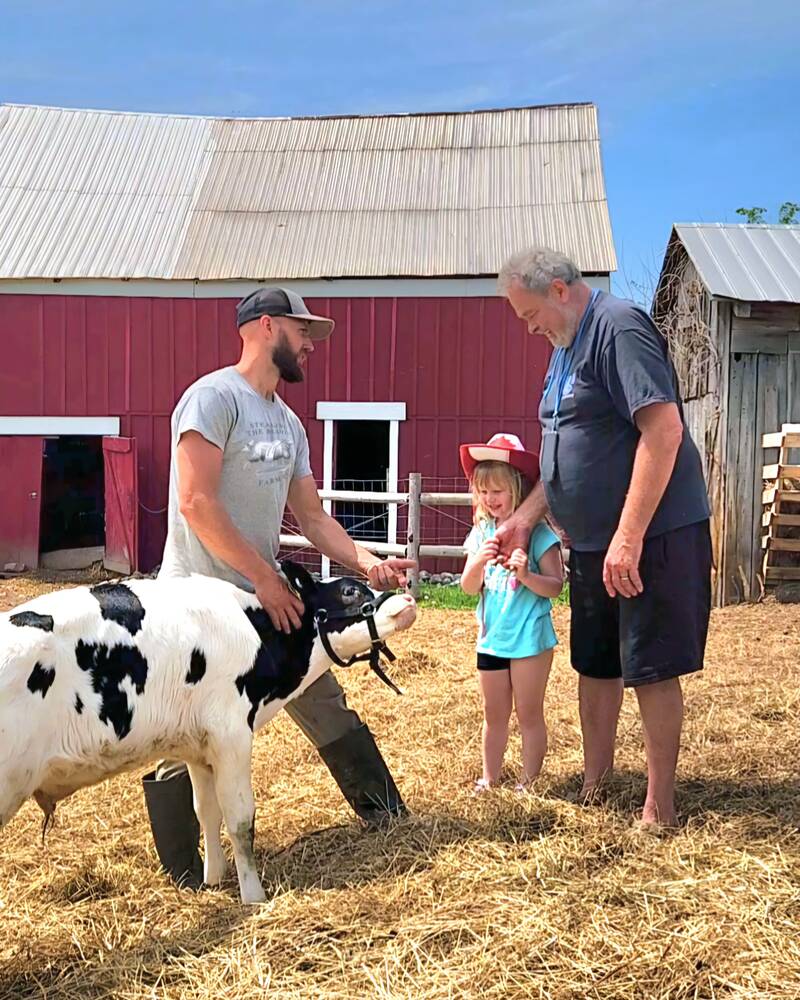Agritourism set to grow with provincial funding, new law

Agritourism operators will now benefit from provincial government funding and have gained new legal protection to shield them from potential liability.
Read Also
Ontario Agri-Food Discovery Centre planned for Listowel area
A pre-COVID vision of creating a children’s museum in Listowel has been transformed into dreams of one day opening an education discovery centre to educate urban children about agriculture.
Why it matters: Agritourism can provide an additional revenue stream for farmers.
On Dec. 2, 2024, Agritourism Ontario (formerly Farm Fresh Ontario) announced it received nearly $345,000 in provincial funding over three years to help grow the sector. Nine days later, Private Member’s Bill 186, known as the Growing Agritourism Act, 2024, passed its third and final reading and was granted Royal Assent the following week.
The bill was first tabled by Perth-Wellington MPP Matthew Rae in April 2024 to help mitigate some of the liability exposure risks involved with agritourism should a visitor get injured during an on-farm visit.
“In speaking with agritourism operators and insurance providers, the risk of frivolous lawsuits and the lack of protection against them was a major concern,” Rae said. “This legislation ensures that visitors are well-informed of the inherent risks associated with agritourism operations while also ensuring that operators who have adequately informed their visitors of these risks are not held liable for the negligent actions of a visitor.”
While the timing of this new act and AO’s funding announcement is just a coincidence, said Kevin Vallier, CEO of Agritourism Ontario (AO), both help create a safer environment for the growing number of farmers considering investment in agritourism experiences.
In 2022, the Ontario Federation of Agriculture surveyed its membership and more than 40 per cent of respondents indicated that selling value-added products and providing on-farm experiences could help diversify farm income and raise awareness about agriculture among urban dwellers.
“Now that the act is passed, we want to create an awareness or education campaign for the public to say, ‘This is what to expect when you come to a farm,’” Vallier said. “There are people who hear about an on-farm market or pick-your-own but they’ve never stepped on a farm so they show up in dress shoes or heels, for example. The goal is to educate people on how to make their farm visit more enjoyable and safe.”
Matthew Telfser and his wife Heidi run Stealing the Bloom Farm Co., a seven-acre mixed farm in Westport. Through on-farm visits and tours, they’ve found a way to connect with customers and add additional revenue sources to their bottom line.
One of their biggest hurdles, however, is marketing.
“Most people live in urban areas and don’t understand how their food is grown or how it gets to them. A big barrier is bridging this disconnect between rural farms and urban stomachs,” Telfser said. “It’s a matter of having people know your business exists, where it is located and understanding that with a short drive, they can come for a farm tour.”
Telfser was pleased to learn of AO’s plans to develop an app that would connect visitors to farmers, but also farmers to each other. “When people come for a farm tour, given the significant amount of time spent driving, they want to make the most of their trip,” Telfser said. “When farmers are aware of other businesses in the area, they can recommend a whole day’s worth of activities to their customers: “Further co-ordination on this front would be quite impactful.”
While the specific features are still being finalized, said Vallier, AO’s new app could help farm visitors plan their day by providing information on what’s in season, local weather conditions and an interactive map. This map might also show nearby farms, offer directions, display hours of operation and even include ticketing options.
An economic growth study and professional development programs for AO members on everything from succession planning to social media and local planning regulations round out the components of AO’s multi-pronged strategy.
“We specifically wanted an economic growth study instead of an economic impact study to create a baseline,” Vallier said. “Where is agritourism in Ontario and more importantly, what’s the growth potential over the next five, 10 or 20 years?”
Vallier said that requests for proposals for both the economic growth study and the agritourism app will be sent out in early 2025. He expects the work to take about a year, while the education campaign and professional development workshops will be ongoing.
Source: Farmtario.com

